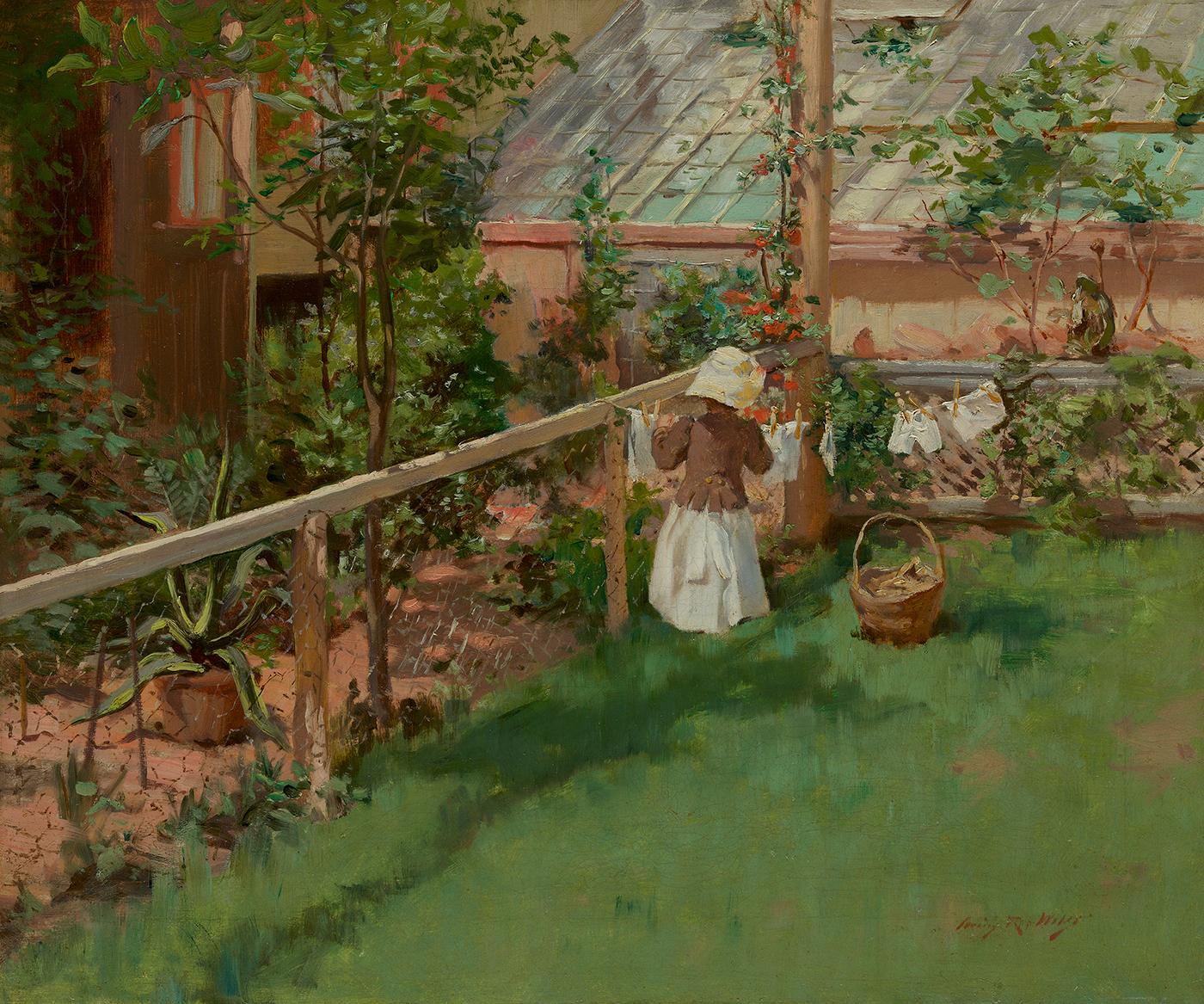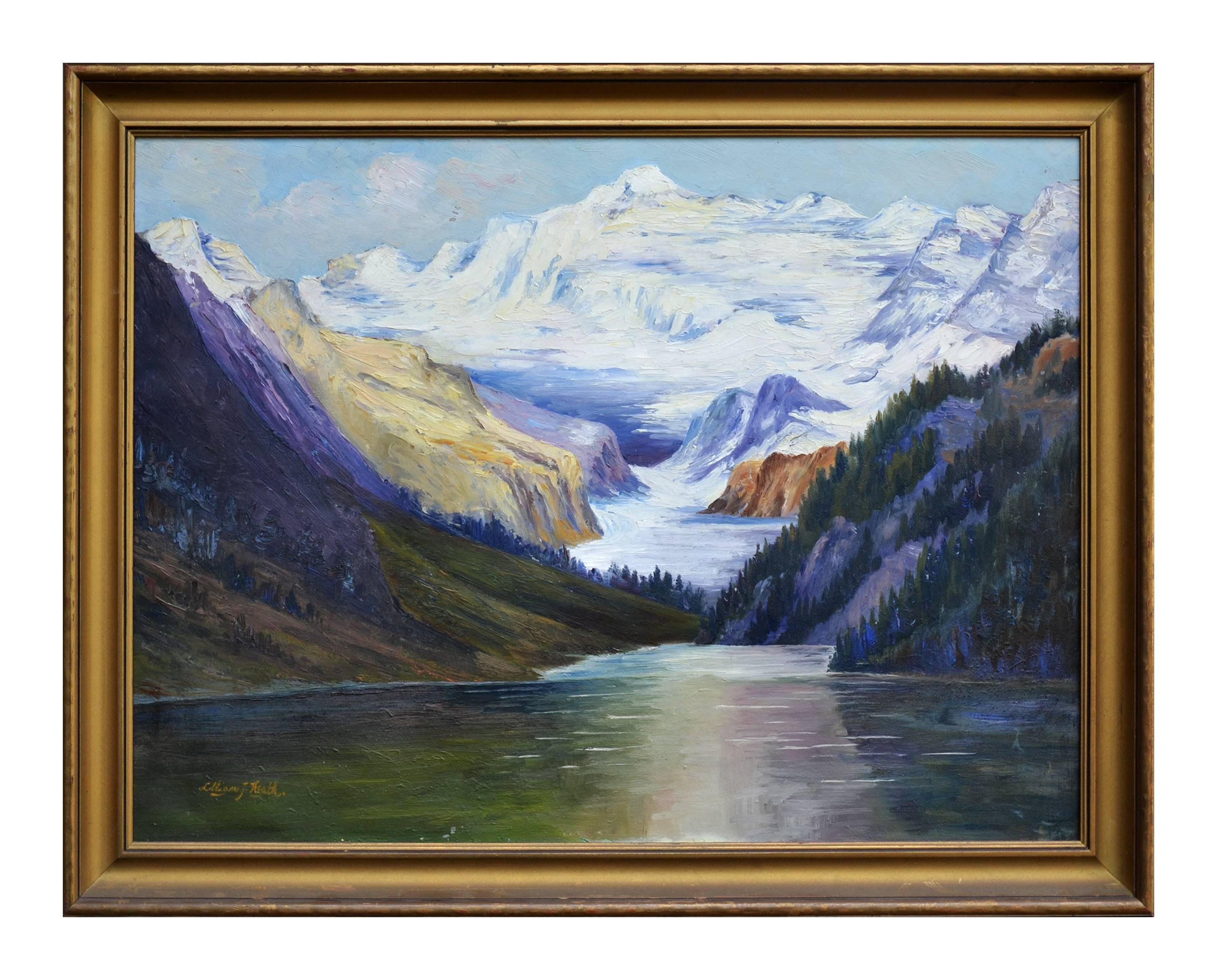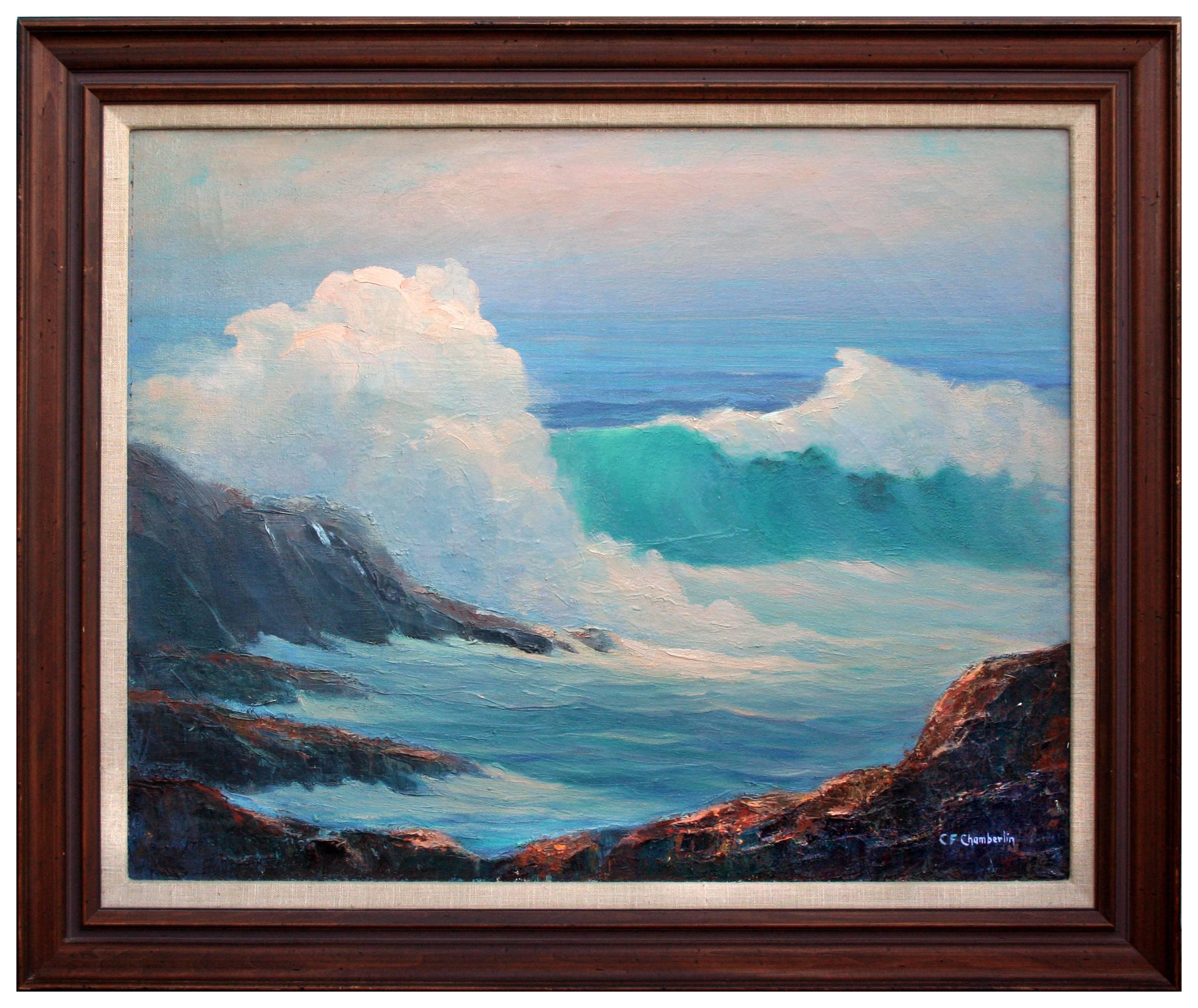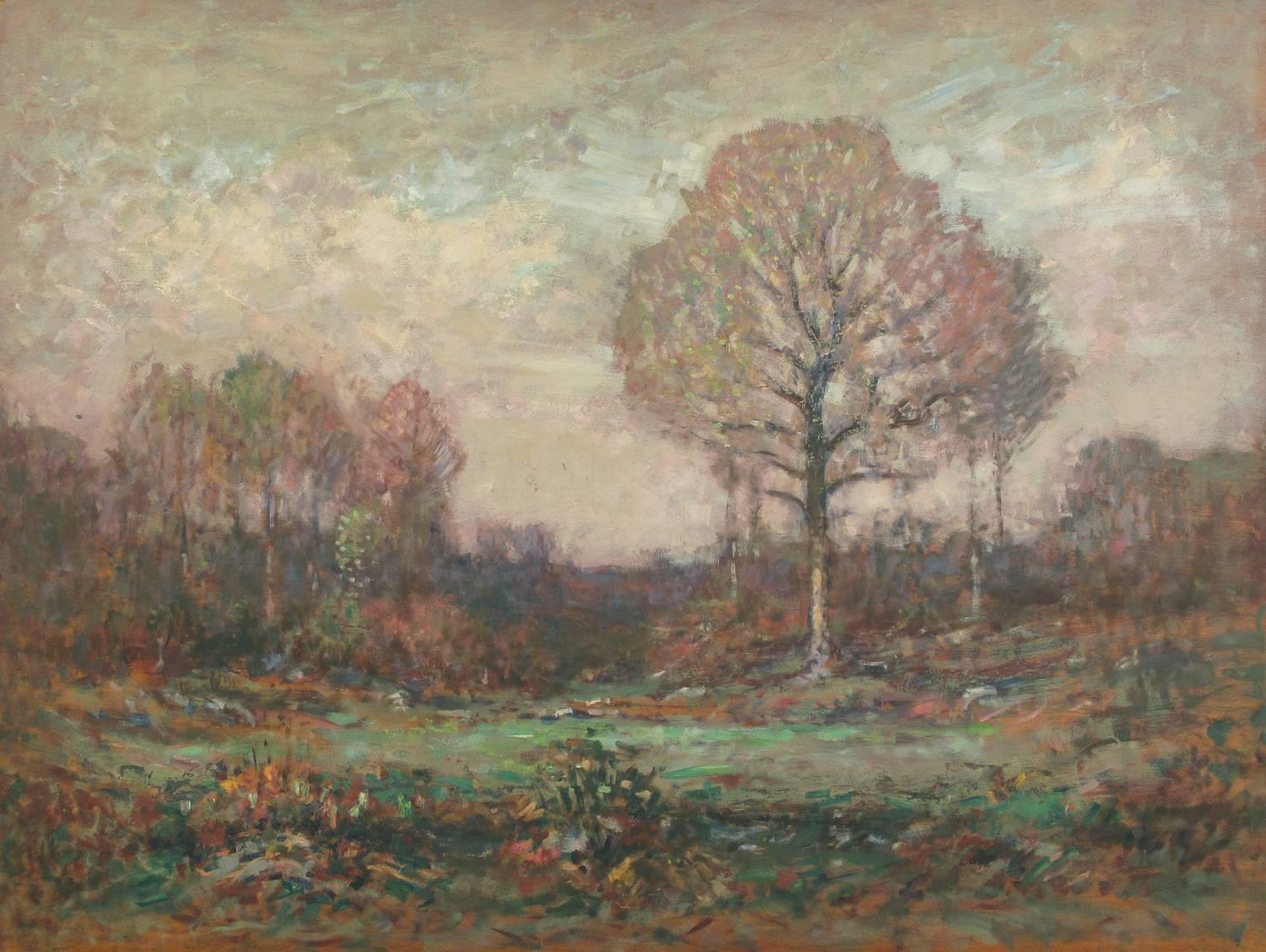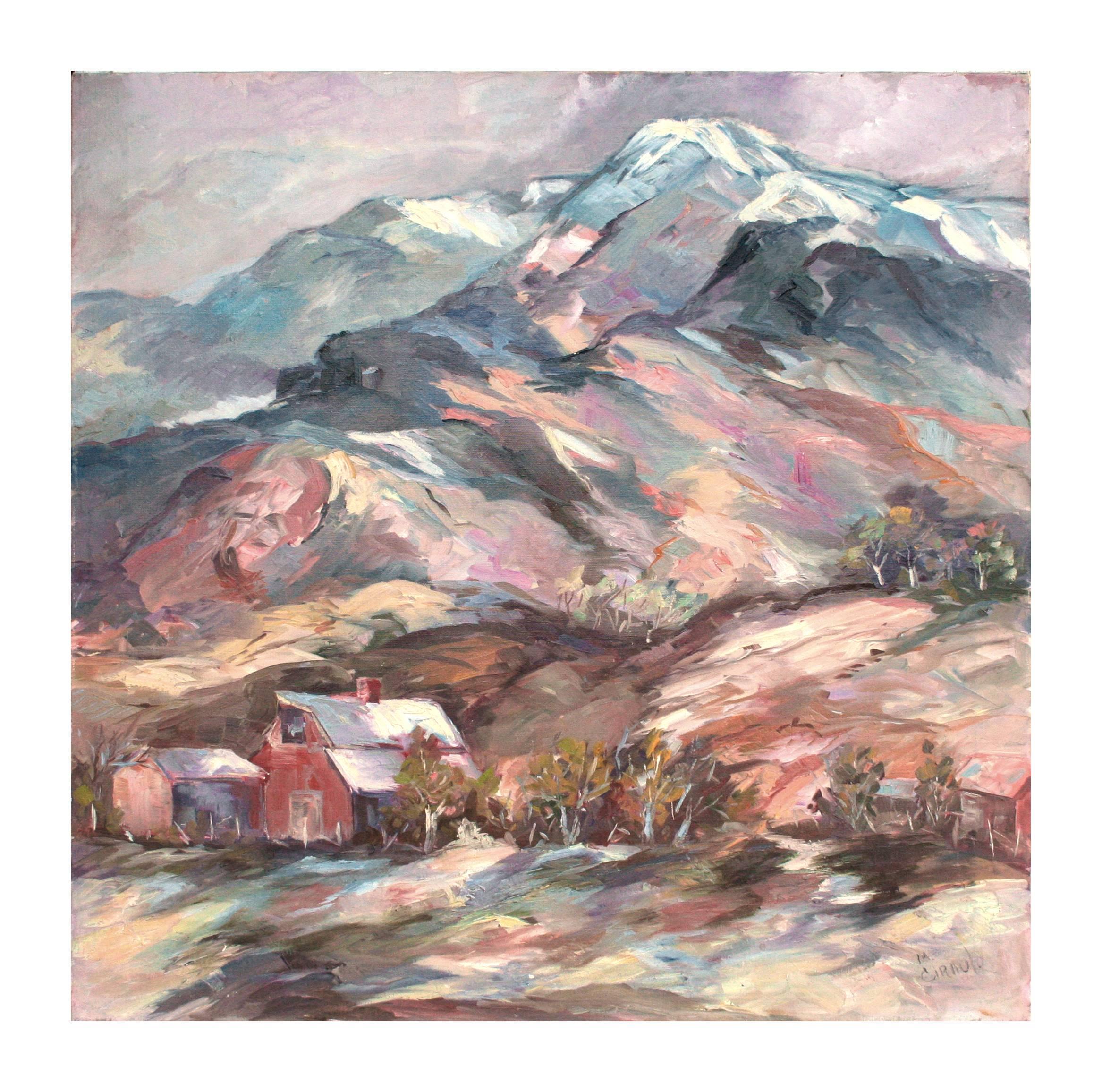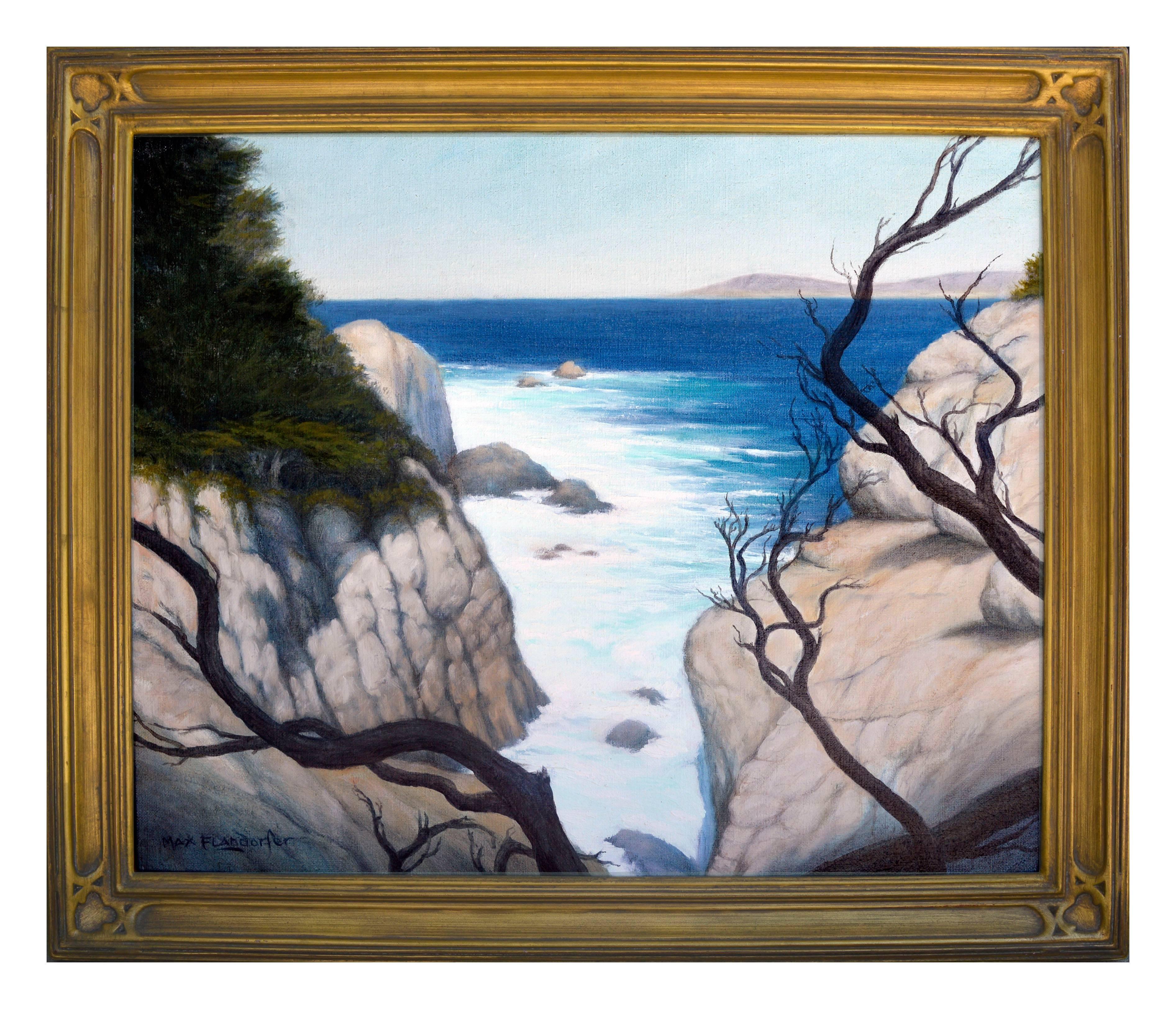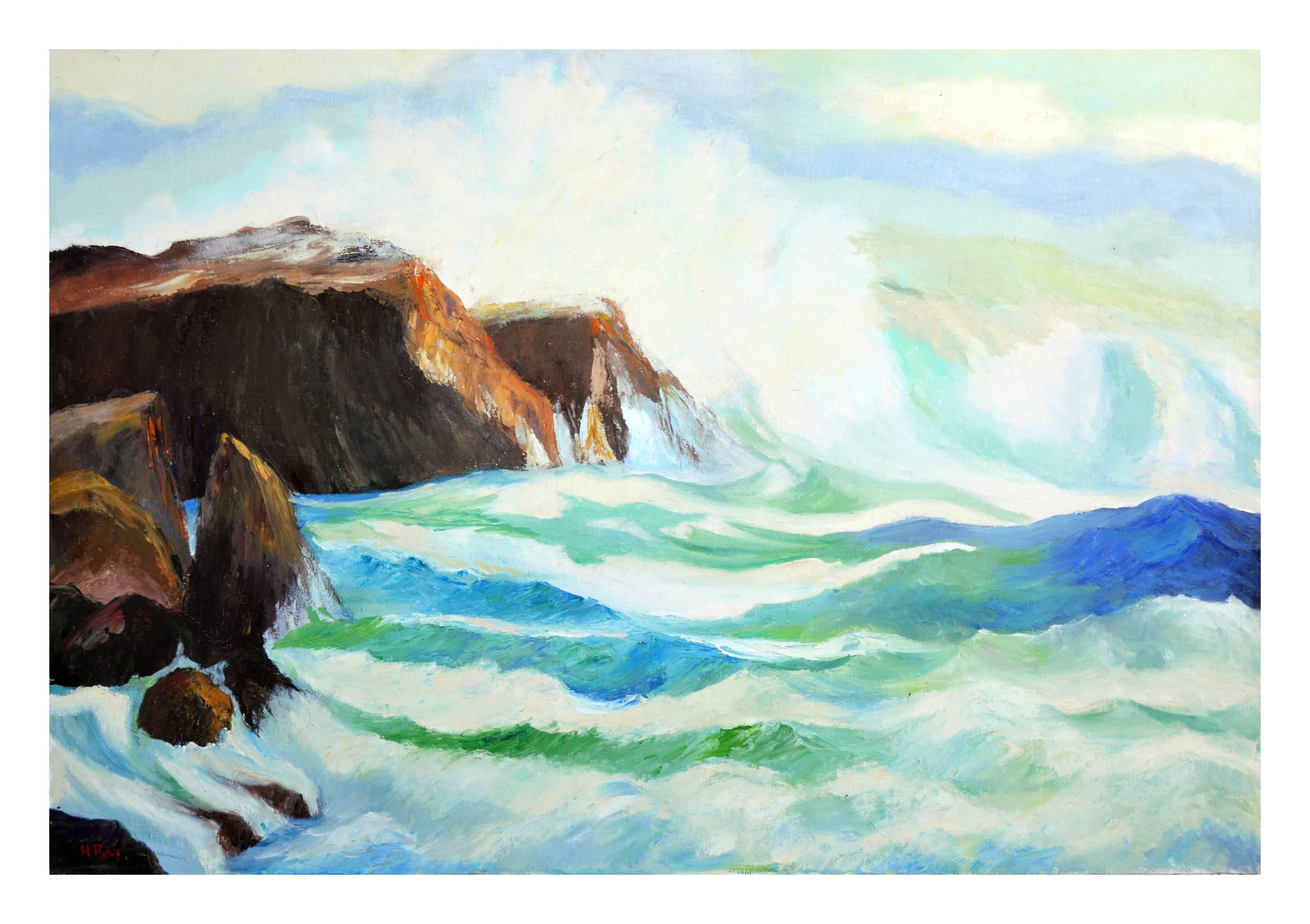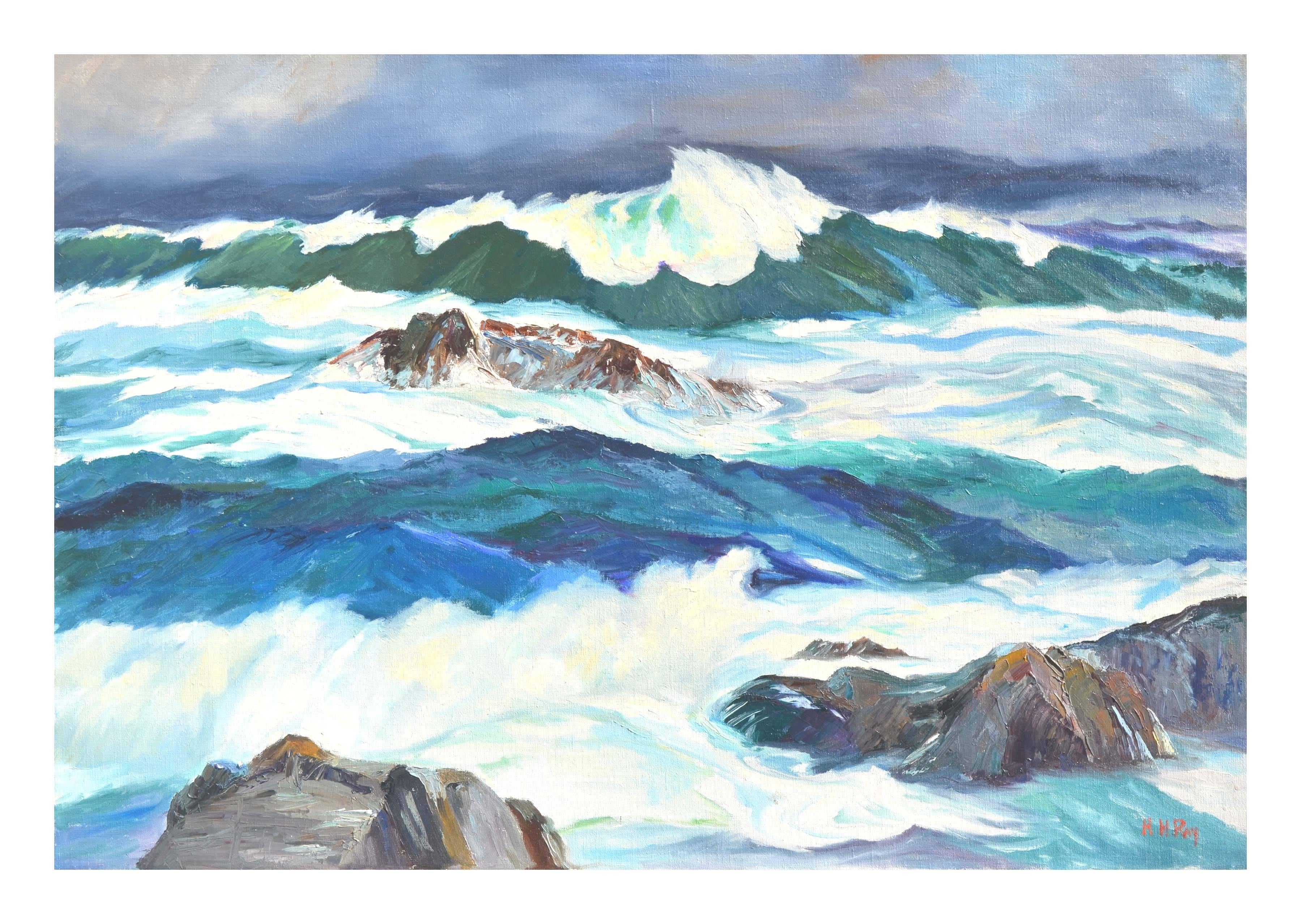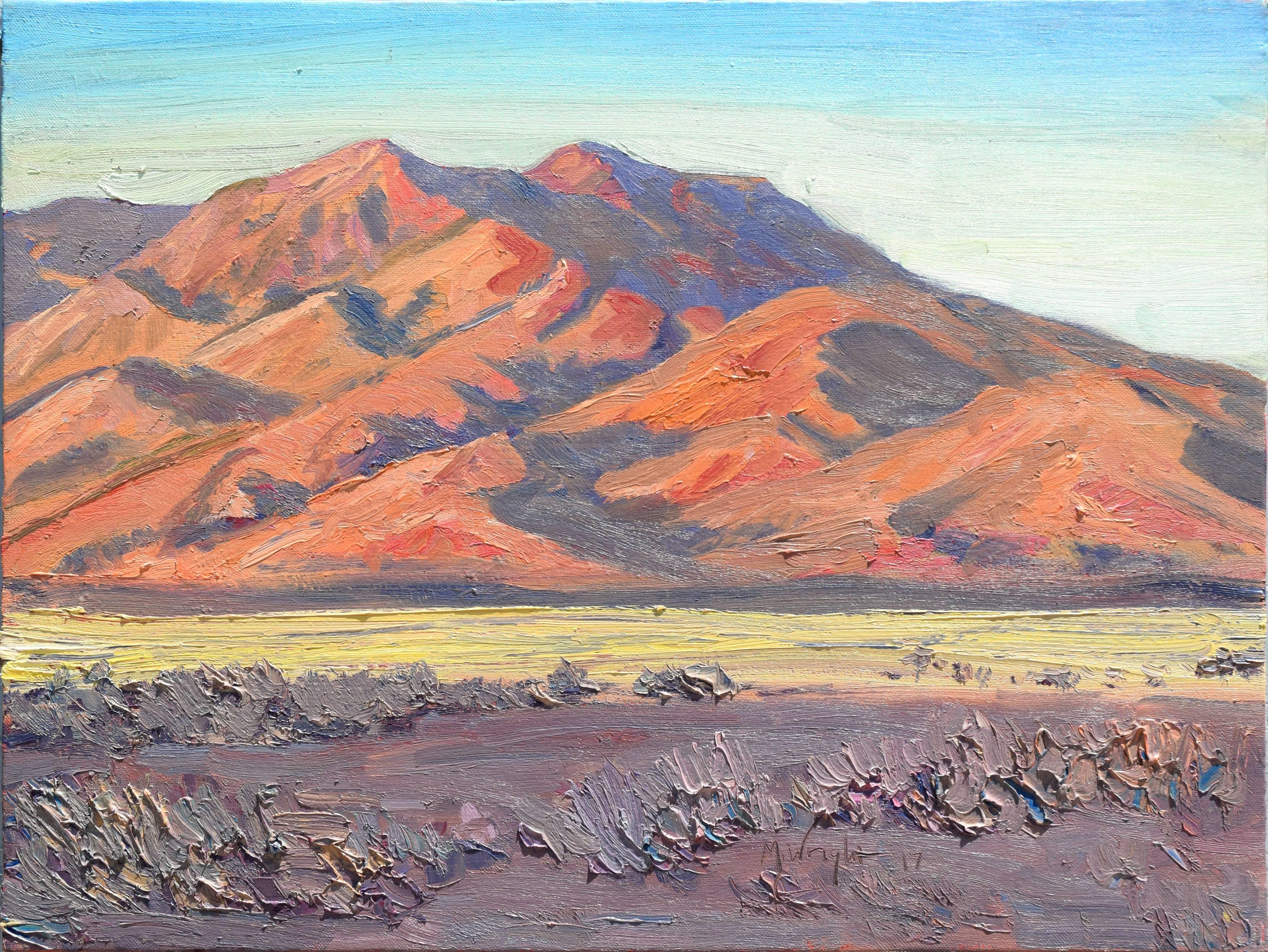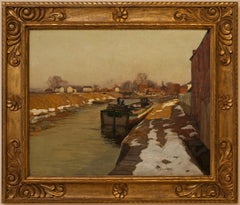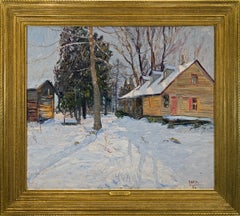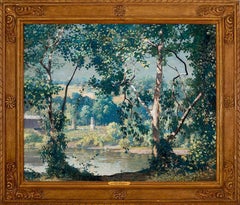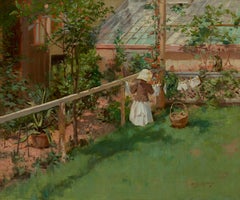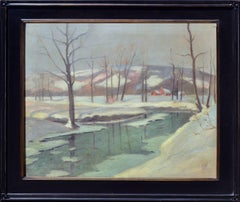
"Lehigh Barge"
View Similar Items
Want more images or videos?
Request additional images or videos from the seller
1 of 5
John Fulton Folinsbee"Lehigh Barge"c. 1929
c. 1929
About the Item
- Creator:John Fulton Folinsbee (1892-1972, American)
- Creation Year:c. 1929
- Dimensions:Height: 32 in (81.28 cm)Width: 38 in (96.52 cm)Depth: 2 in (5.08 cm)
- Medium:
- Movement & Style:
- Period:
- Condition:
- Gallery Location:Lambertville, NJ
- Reference Number:Seller: LAM10111641stDibs: LU374125790
About the Seller
5.0
Vetted Seller
These experienced sellers undergo a comprehensive evaluation by our team of in-house experts.
Established in 1997
1stDibs seller since 2014
36 sales on 1stDibs
Typical response time: 6 hours
More From This SellerView All
- "The Canal"By Edward Willis RedfieldLocated in Lambertville, NJJim’s of Lambertville is proud to offer this artwork. Signed lower left. Complemented by a hand carved and gilt frame. Illustrated in "Edward Redfield: Just Values and Fine Seeing" by Constance Kimmerle and the Pennsylvania Academy of the Fine Arts's Exhibition of Paintings by Edward Redfield (April 17 to May 16, 1909) brochure Edward Willis Redfield (1869 - 1965) Edward W. Redfield was born in Bridgeville, Delaware, moving to Philadelphia as a young child. Determined to be an artist from an early age, he studied at the Spring Garden Institute and the Franklin Institute before entering the Pennsylvania Academy from 1887 to 1889, where he studied under Thomas Anshutz, James Kelly, and Thomas Hovenden. Along with his friend and fellow artist, Robert Henri, he traveled abroad in 1889 and studied at the Academie Julian in Paris under William Bouguereau and Tony Robert-Fleury. While in France, Redfield met Elise Deligant, the daughter of an innkeeper, and married in London in 1893. Upon his return to the United States, Redfield and his wife settled in Glenside, Pennsylvania. He remained there until 1898, at which time he moved his family to Center Bridge, a town several miles north of New Hope along the Delaware River. Redfield painted prolifically in the 1890s but it was not until the beginning of the twentieth century that he would develop the bold impressionist style that defined his career. As Redfield’s international reputation spread, many young artists gravitated to New Hope as he was a great inspiration and an iconic role model. Edward Redfield remained in Center Bridge throughout his long life, fathering his six children there. Around 1905 and 1906, Redfield’s style was coming into its own, employing thick vigorous brush strokes tightly woven and layered with a multitude of colors. These large plein-air canvases define the essence of Pennsylvania Impressionism. By 1907, Redfield had perfected his craft and, from this point forward, was creating some of his finest work. Redfield would once again return to France where he painted a small but important body of work between 1907 and 1908. While there, he received an Honorable Mention from the Paris Salon for one of these canvases. In 1910 he was awarded a Gold Medal at the prestigious Buenos Aires Exposition and at the Panama-Pacific Exposition of 1915 in San Francisco, an entire gallery was dedicated for twenty-one of his paintings. Since Redfield painted for Exhibition with the intent to win medals, his best effort often went into his larger paintings. Although he also painted many fine smaller pictures, virtually all of his works were of major award-winning canvas sizes of 38x50 or 50x56 inches. If one were to assign a period of Redfield’s work that was representative of his “best period”, it would have to be from 1907 to 1925. Although he was capable of creating masterpieces though the late 1940s, his style fully matured by 1907 and most work from then through the early twenties was of consistently high quality. In the later 1920s and through the 1930s and 1940s, he was like most other great artists, creating some paintings that were superb examples and others that were of more ordinary quality. Redfield earned an international reputation at a young age, known for accurately recording nature with his canvases and painting virtually all of his work outdoors; Redfield was one of a rare breed. He was regarded as the pioneer of impressionist winter landscape painting in America, having few if any equals. Redfield spent summers in Maine, first at Boothbay Harbor and beginning in the 1920s, on Monhegan Island. There he painted colorful marine and coastal scenes as well as the island’s landscape and fishing shacks. He remained active painting and making Windsor style furniture...Category
Early 1900s American Impressionist Landscape Paintings
MaterialsCanvas, Oil
- "Winter Sunlight"By Walter Emerson BaumLocated in Lambertville, NJJim’s of Lambertville Fine Art Gallery is proud to present this piece by Walter Emerson Baum (1884 - 1956). Born in Sellersville, Pennsylvania, Walter Baum was one of the only membe...Category
1930s American Impressionist Landscape Paintings
MaterialsCanvas, Oil
- "Fields in Jersey"By Daniel GarberLocated in Lambertville, NJJim’s of Lambertville Fine Art Gallery is proud to present this piece by Daniel Garber (1880 - 1958). One of the two most important and, so far, the most valuable of the New Hope Sc...Category
Early 1900s American Impressionist Landscape Paintings
MaterialsCanvas, Oil
- "Christmas Time, Sellersville"By Walter Emerson BaumLocated in Lambertville, NJJim’s of Lambertville Fine Art Gallery is proud to present this piece by Walter Emerson Baum (1884 - 1956). Born in Sellersville, Pennsylvania, Walter Baum was one of the only membe...Category
1930s American Impressionist Landscape Paintings
MaterialsCanvas, Oil
- "End of the Day, Gloucester Harbor"By John Fulton FolinsbeeLocated in Lambertville, NJJim's of Lambertville Fine Art Gallery is proud to present this piece by John Fulton Folinsbee (1892 - 1972). One of the finest painters to embark upon the New Hope Art Colony, John...Category
1910s American Impressionist Landscape Paintings
MaterialsCanvas, Oil
- "In Port"By Edward Willis RedfieldLocated in Lambertville, NJJim’s of Lambertville is proud to offer this artwork by: Edward Willis Redfield (1869 - 1965) Edward W. Redfield was born in Bridgeville, Delaware, moving to Philadelphia as a young child. Determined to be an artist from an early age, he studied at the Spring Garden Institute and the Franklin Institute before entering the Pennsylvania Academy from 1887 to 1889, where he studied under Thomas Anshutz, James Kelly, and Thomas Hovenden. Along with his friend and fellow artist, Robert Henri, he traveled abroad in 1889 and studied at the Academie Julian in Paris under William Bouguereau and Tony Robert-Fleury. While in France, Redfield met Elise Deligant, the daughter of an innkeeper, and married in London in 1893. Upon his return to the United States, Redfield and his wife settled in Glenside, Pennsylvania. He remained there until 1898, at which time he moved his family to Center Bridge, a town several miles north of New Hope along the Delaware River. Redfield painted prolifically in the 1890s but it was not until the beginning of the twentieth century that he would develop the bold impressionist style that defined his career. As Redfield’s international reputation spread, many young artists gravitated to New Hope as he was a great inspiration and an iconic role model. Edward Redfield remained in Center Bridge throughout his long life, fathering his six children there. Around 1905 and 1906, Redfield’s style was coming into its own, employing thick vigorous brush strokes tightly woven and layered with a multitude of colors. These large plein-air canvases define the essence of Pennsylvania Impressionism. By 1907, Redfield had perfected his craft and, from this point forward, was creating some of his finest work. Redfield would once again return to France where he painted a small but important body of work between 1907 and 1908. While there, he received an Honorable Mention from the Paris Salon for one of these canvases. In 1910 he was awarded a Gold Medal at the prestigious Buenos Aires Exposition and at the Panama-Pacific Exposition of 1915 in San Francisco, an entire gallery was dedicated for twenty-one of his paintings. Since Redfield painted for Exhibition with the intent to win medals, his best effort often went into his larger paintings. Although he also painted many fine smaller pictures, virtually all of his works were of major award-winning canvas sizes of 38x50 or 50x56 inches. If one were to assign a period of Redfield’s work that was representative of his “best period”, it would have to be from 1907 to 1925. Although he was capable of creating masterpieces though the late 1940s, his style fully matured by 1907 and most work from then through the early twenties was of consistently high quality. In the later 1920s and through the 1930s and 1940s, he was like most other great artists, creating some paintings that were superb examples and others that were of more ordinary quality. Redfield earned an international reputation at a young age, known for accurately recording nature with his canvases and painting virtually all of his work outdoors; Redfield was one of a rare breed. He was regarded as the pioneer of impressionist winter landscape painting in America, having few if any equals. Redfield spent summers in Maine, first at Boothbay Harbor and beginning in the 1920s, on Monhegan Island. There he painted colorful marine and coastal scenes as well as the island’s landscape and fishing shacks. He remained active painting and making Windsor style furniture...Category
Early 1900s American Impressionist Landscape Paintings
MaterialsCanvas, Oil
You May Also Like
- At the ClotheslineBy Irving Ramsey WilesLocated in New York, NYSigned lower right: Irving R. WilesCategory
Late 19th Century American Impressionist Landscape Paintings
MaterialsCanvas, Oil
- Salmon FishingBy John WhorfLocated in Milford, NHA fine impressionist sporting painting with salmon fisherman in a canoe by American artist John Whorf (1903-1959). Whorf was born in Winthrop, Massachusetts and by the age of sixteen...Category
Mid-20th Century American Impressionist Landscape Paintings
MaterialsOil, Canvas
$22,000 - A Winter Scene - Snowy 1930's LandscapeBy Frederick R. WagnerLocated in Soquel, CASerene winter landscape of a snow covered hills with a frozen creek and far off house in the distance by Frederick Wagner (American, 1864-1940), c.1930's. Signed "F. W." lower right....Category
1930s American Impressionist Landscape Paintings
MaterialsCanvas, Oil
$5,200 Sale Price20% Off - Mid Century Sierra Mountain Lake LandscapeBy Lillian Jackson HeathLocated in Soquel, CASweeping mid-century landscape of a lake and snow-capped mountains by Lillian Josephine Heath (American, 1864-1961). A gigantic, snow-covered mountain dominates the upper portion of the composition, rising above the rest of the landscape. In the shadow of the mountain is a valley lake, filled with snowmelt, with several smaller mountains in between. Signed "Lillian Heath" lower left. Displayed in a giltwood frame. Image, 20.5"H x 28"L. Lillian Heath was one of the Jolly Daubers at the turn of the 19th-century and as a young student, married the senior artist and instructor, Frank Heath in Santa Cruz, California. Artists Frank and Lillian [Heath] by Margaret Koch [transcribed from Santa Cruz Public Library website]….Frank L. Heath courted Lillian Dake Storey during painting trips around Santa Cruz County back in the 1890s. Those were the years when Lillian was riding a saddle horse daily from Santa Cruz to the Powdermill where she taught school. Today [1974] the Powdermill is Paradise Park. Frank's actual proposal of marriage was delivered at Rocky Falls, a beautiful scenic place on Carbonero Creek. There he had constructed a painting platform with a perfect view of the rushing waters, and it was there that he asked Lillian in that formal day and age, to be his bride. Frank was nearly 40 years old at the time, and Lillian was about 32. She had always been interested in art and had talent to a large degree. She took a year's leave of absence from teaching school to travel alone to New York where she visited relatives and stayed to study china painting and the painting of miniatures which is an art in itself. ‘When I returned from New York I enrolled in the art classes of a Santa Cruz artist who was making a name for himself,’ she once said with a smile. The artist was Frank L. Heath, and that was the start of their romance, she told me in 1959. She accepted Frank's proposal at Rocky Falls. At the Heath home on Third Street, Beach Hill, Frank added a wing with a large studio workroom downstairs and several bedrooms upstairs. That was his wedding gift to his bride. ‘The Studio’ had a fireplace and big bay windows that looked out over the town of Santa Cruz and back to the mountains they both loved and painted many times. Lillian painted a set of tiles for the fireplace; they showed darting swallows in the clouds above a stream where song birds perched on tulles and water lilies floated. In 1897 Lillian and Frank were married in the First Methodist Church and they moved into the home on Beach Hill, a house she continued to live in for 64 years. Frank's father, Lucien Heath, was the first Secretary of State of Oregon. He came to Santa Cruz from Oregon in 1866 with his wife, Jane, and sons, Frank and Henry. A daughter, Lina, had died in Michigan where the Heaths lived before crossing the plains to Oregon in 1852. [?] In Santa Cruz Lucien Heath opened one of the early hardware stores on Pacific Avenue in partnership with John Byrne...Category
1940s American Impressionist Landscape Paintings
MaterialsCanvas, Oil
$2,000 Sale Price20% Off - Mid Century Northern California Rocky Shore SeascapeBy Cecil F. ChamberlinLocated in Soquel, CAGorgeous seascape by Cecil F. Chamberlin (American, 1899-1963) Signed "C. F. Chamberlin" lower right. Displayed in wood frame. Image, 24"H x 30"W. Cecil F. Chamberlin was born in Santa Rosa, CA on May 5, 1899. Chamberlin was educated at Stanford University and then studied art at the CSFA. He then taught art in San Francisco for many years. During the later part of his life he lived down the coast in Santa Cruz where he operated an art gallery, lectured, and had many students. He was a nephew of artist Winnie Chamberlin...Category
1960s American Impressionist Landscape Paintings
MaterialsCanvas, Oil
$1,720 Sale Price20% Off - "Oak in Spring" 1930 American Impressionist oil painting, oak tree landscapeBy Henry Cooke WhiteLocated in Sag Harbor, NY"Oak in Spring" is a 1930 American Impressionist oil painting of an oak tree landscape. Painted en plein-air, in an almost pointillist style, H.C. White depicts a classic Connecticut landscape. A Tall wiry tree stands as the focal point, having just bloomed its first leaves; foliage still thin enough to outline every single branch. Reds and browns scattered throughout the foreground connote autumn leaves that had yet to be cleared. Henry Cooke White (b. 1861) in Hartford Connecticut. His career in art was founded at the age of 14, when he met the famous American Tonalist painter, Dwight William Tyron. The two became lifelong friends, and White even wrote Tyron’s major biography, The Life and Art of Dwight William Tyron (pub. 1930). In the late 1880’s, Tyron pushed White to move to New York City to further his artistic training at the Art Students League. During this time, White studied under many talented artist’s; Kenyon Cox, John H. Twatchman, and William Merritt Chase. From 1896-1897, White spent time travelling in Europe. Upon his return to the states, he began to spend most of his time in Connecticut, following his favorite painting seasons. Spring in Hartford was followed a week later by spring in Old Lyme, and then finally at Waterford. He’d experience his favorite seasons three times over each year. Once immersed into Connecticut’s community, White was encouraged to paint habitually in Old Lyme; where an art colony was developing, beginning in the spring of 1903. Inspired by European artists, including Claude Monet, and Pierre Auguste-Renoir, the Old Lyme Art Colony defined American Impressionism by memorializing the serene qualities of rural New England life through use of vibrant palettes and broken strokes on wood and canvas. The Colony comprised upwards of 200 artists during its three decades of creating nature-based scenes in oils and pastels; Frederick Childe Hassam...Category
Mid-20th Century American Impressionist Landscape Paintings
MaterialsCanvas, Oil
Recently Viewed
View AllMore Ways To Browse
Friendship Maine
Ruth Armer
Ashcan Reading
Medal Harrison
Ruth Carlson
Ruth Carlson Art
1940 Painter Beach Scenes
Ocean Today
Large Original Painting Marine
Portuguese Whistles
Canadian Oil Painting Vintage
Isaac Levitan
Americana Painting Farmhouse
Antique Felix The Cat
Arthur Easton
Don Anton
E Sutton
Florence Casey
